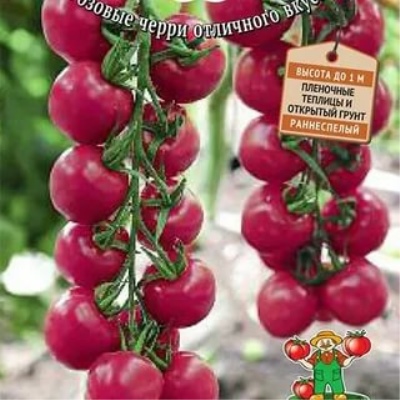
- Authors: Gorshkova N.S., Khovrin A.N., Maksimov S.V., Tereshonkova T.A.
- Year of approval: 2015
- Category: grade
- Growth type: determinant
- Appointment: fresh consumption, for whole fruit preservation
- Ripening period: early
- Ripening time, days: 95-100
- Growing conditions: for open ground, for film greenhouses
- Bush height, cm: up to 100
- Leaves: small, green
Every year breeders delight gardeners with new developments. But in pursuit of the freshest varieties, even those that were bred some time ago are often forgotten. This is exactly what the Sweet Encounter tomato deserves the maximum attention.
Breeding history
They have been working on this plant for quite a long time. It was officially registered in the state register in 2015. A team of 4 large breeders participated in the project. It should be noted that they did not use hybridization.
Description of the variety
The sweet encounter shows the classic signs of the determinate tomato. The plant is suitable for both unenclosed garden soil and greenhouses under polyethylene. The bushes reach a height of 1 m. They are covered with medium-sized foliage of a simple green color.
The main qualities of the fruit
When the Sweet Meeting berries are just forming from the ovaries, they are green in color. There is also no spot at the base. Tomatoes will turn pink as they develop further. The size allows these 17-gram berries to be attributed to the cherry group. Other features:
simple rounded configuration;
formation from a simple inflorescence;
typical articulation of the peduncle;
a decent level of keeping quality;
13, 14 or 15 tomatoes in each cluster.
Taste characteristics
The pulp of the Sweet encounter is moderately firm. A pronounced sweetness is typical for her. The smooth skin does not have any significant effect on the taste perception.
Ripening and fruiting
The variety is traditionally referred to the early group of tomatoes. Under normal conditions, berries ripen in 95-100 days. The starting point is the pecking of the first green shoots. You can remove the fruits in July and August.
Yield
A sweet meeting is pretty productive. The collection can reach 4.9 kg per 1 sq. m. However, a lot depends on the actual growing conditions and what the farmers do.
The timing of planting seedlings and planting in the ground
Sowing seeds in containers is necessary in March. The readiness for transplanting seedlings into open ground is achieved in May. It is necessary to be guided by the condition of specific plants.

Growing tomato seedlings is an extremely important process, because it largely depends on whether the gardener can harvest at all. All aspects must be taken into account, from seedbed preparation to planting in the ground.
Landing scheme
It is optimal to plant such a crop in a 250x300 mm system. This is the procedure strongly recommended by the supplier of planting material.

Growing and care
It is absolutely impossible to do without the elimination of the stepsons and without attachment to the support. It will not be possible to refuse the formation of this plant. Before planting, it is recommended to treat the soil with a weak solution of potassium permanganate. The pick is done in the phase of 2 true leaves. The tomato deserves to be loosened and fed.
It is recommended to plant this plant in a sheltered location whenever possible. Landing is also possible in shaded areas. This does not lead to a decrease in productivity. For irrigation use water with a temperature of 20-22 degrees. The garter should go 3-4 days after disembarkation.
A variety of fertilizers are used for feeding. They are applied 3 or 4 times during the growing season. It is necessary to dive seedlings 7-10 days after the formation of shoots. A total of 1 plant is placed in each well. There are no more subtleties when growing.




A plant needs different micronutrients at each stage of growth. All fertilizers can be divided into two groups: mineral and organic. Folk remedies are often used: iodine, yeast, bird droppings, eggshells.
It is important to observe the rate and period of feeding. This also applies to folk remedies and organic fertilizers.
Disease and pest resistance
Very high resistance to fusarium wilt is declared. But only those farmers who are additionally reinsured will be reliably protected from this problem.


Growing regions
Cultivation of this plant is allowed:
in the north of the European part of Russia;
in the Far East;
in the North Caucasus;
in the areas of Western and Eastern Siberia;
throughout the Volga basin;
in the center and in the south of the European part of the Russian Federation.

























































































